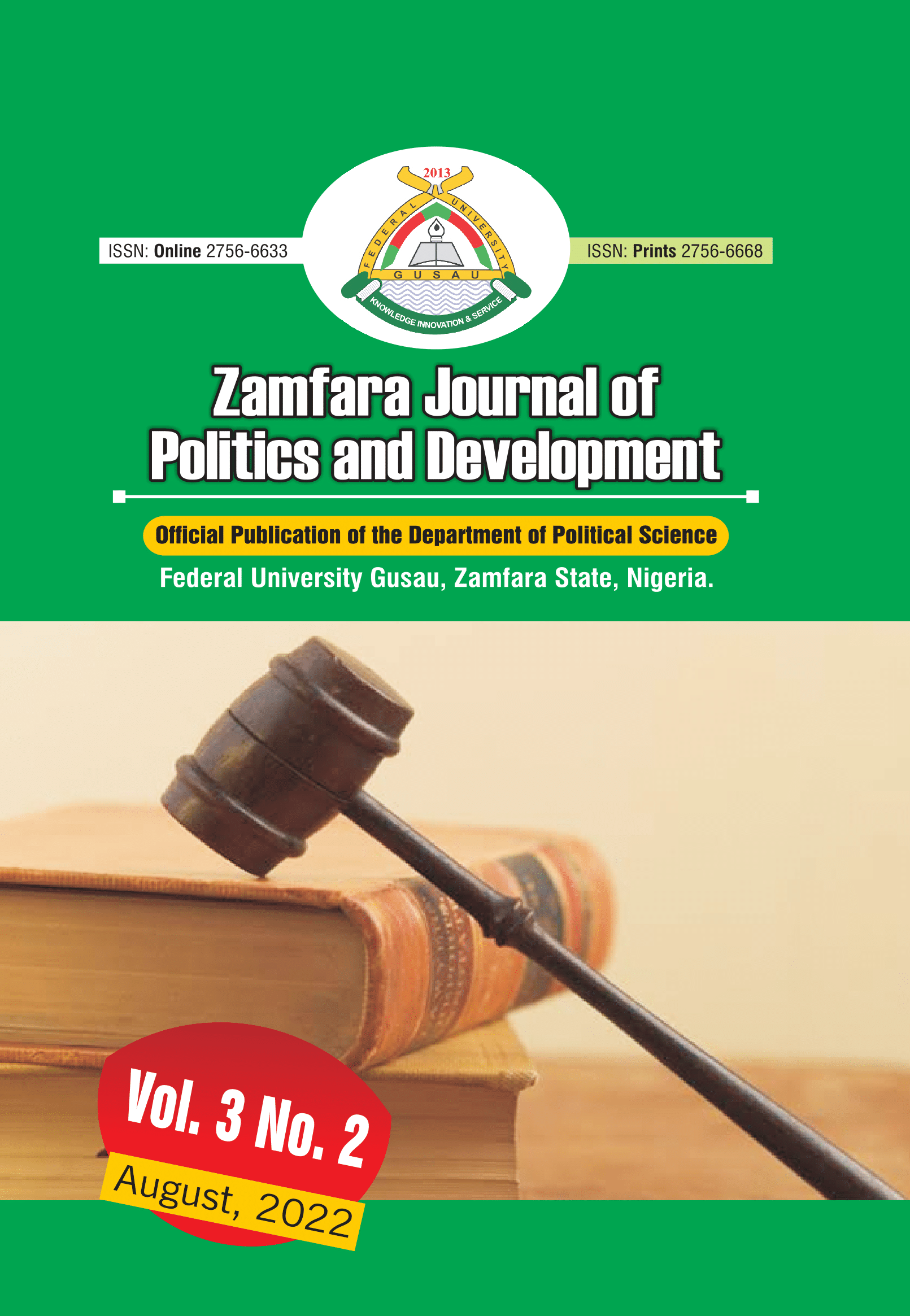ASSESSMENT OF THE IMPACT OF POLITICAL THUGGARY ON THE POLITICAL DEVELOPMENT OF ZARIA LOCAL GOVERNMENT AREA OF KADUNA STATE
Keywords:
Thuggery, Political Thuggery, Political DevelopmentAbstract
This paper is set to critically examine the daunting effects of political thuggery on political development in Zaria Local Government Area of Kaduna state with a view to providing pragmatic solutions to the menace. To achieve this, Structural Theory of Conflict, particularly the liberal version expounded by Galtung (1990), Ross (1993) and Scarborough (1998) is employed to analyse the main theme of the paper. The study found that the activities of political thugs in Zaria Local Government Area of Kaduna state have no doubt impeded the socio-political development of the study area. This was reflected on how almost all the pillars upon which the social development of the study area was underpinned were affected. Not only that, it has also impinged on the sanctity of the electoral process by undermining the legitimacy of elected candidates and election results thereby threatening democratic stability in the study area. The study also found that much effort has been made by community leaders as well as government officials and agencies through the implementation of various programmes with a view to checking the rising incidences of political thuggery and to prevent their possible future re-emergence. The findings revealed that the measures put in place were barely effective due to factors such as undue political interference by political elites (particularly those from the ruling party), inadequate funding, lack of modern communication gadgets, and logistics challenges. The study therefore, recommend among other things, that political elites/politicians and political parties should know that, winning and losing are the two features of any election, so, the employment of foul means such as political thuggery in a bid to win elections is against the tenants of liberal democracy.
Downloads
Published
Issue
Section
License
Copyright (c) 2022 Author(s)

This work is licensed under a Creative Commons Attribution-ShareAlike 4.0 International License.
Authors retain the copyright of their manuscripts, and all Open Access articles are distributed under the terms of the Creative Commons Attribution License, which permits unrestricted use, distribution, and reproduction in any medium, provided that the original work is properly cited.




